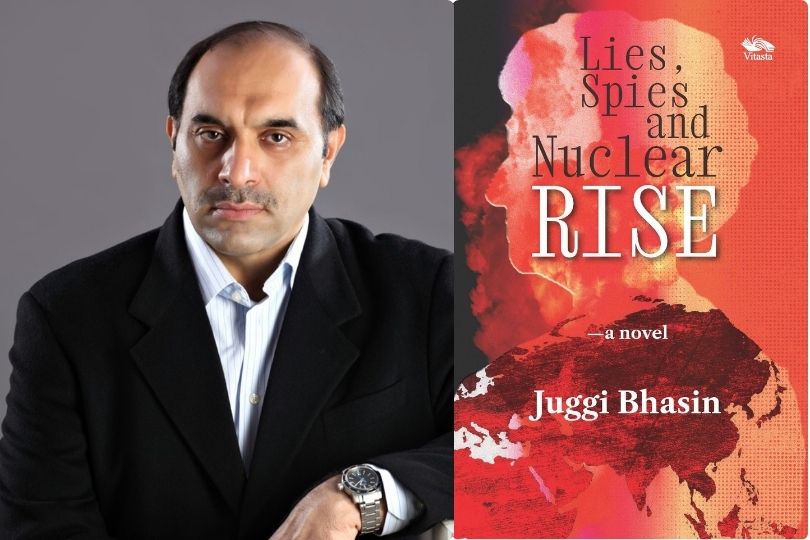Interview with Sunil Gadhoke, Author of “Long Live the Tiger”
Explore the conservation journey with Sunil Gadhoke, author of 'Long Live the Tiger.' Insights on tiger preservation and environmental sustainability await.on Jun 03, 2024

Sunil Gadhoke, a dynamic entrepreneur hailing from Delhi, has been actively engaged in both the renewable and thermal energy sectors. Apart from his business ventures, Sunil pursues a diverse range of interests. He has been an avid glider pilot, finding solace and excitement while soaring alongside magnificent birds. He has gained significant recognition for his exceptional proficiency in the art of Bonsai culture and is also an ardent cook.
Sunil enthusiastically pursued wildlife photography in recent years which has manifested in this book. His acute attention for detail and a passion that drives perfection, allows him to capture captivating moments while also playing a role in the broader conservation narrative. Through his work, he strives to raise awareness about the iconic and endangered species, making a meaningful contribution. "Long Live the Tiger" provides a glimpse into Sunil Gadhoke's unwavering commitment for preserving these majestic creatures.
Frontlist: What inspired you to write ‘Long Live the Tiger’ and what core message do you hope readers will take away from it?
Sunil: The tiger is an icon of the Indian jungle. With one of the last remaining populations in the world, ‘Project Tiger’ has been a remarkable story. Coinciding with the golden jubilee year, my motivation to write the book was to draw attention of fellow Indians on the remarkable story of a species retrieval program. Tigers were certain to have gone extinct in the wild when Project Tiger started and just how fortunate we are to see this magnificent animal still thriving in its natural habitat.
Notwithstanding our success, I strongly felt that we may have saved the tiger from extinction for now, but the threats facing the tiger have not gone away. As such we don’t have the luxury to be complacent to believe we have saved the tiger from extinction forever. Going forward we need to plan for the next several decades by scientifically and objectively applying the learnings towards future of conservation.
Frontlist: Based on your research, what are some of the most effective strategies for tiger conservation, and how can these strategies be implemented on a global scale?
Sunil: I believe the human DNA is coded to enjoy nature. With the youngest and progressively affluent population in the world, the need for nature based tourism is on the rise and will keep growing for next several decades. Whereas the existing forests and resources are limited. As in the past there will continue to be a pressure on them to get diverted due to human development pressure and/or their quality will keep depleting due to poaching of prey base and other forest dependent activities. We are in a unique dynamic of diminishing supply of forests and increasing demand for nature-based tourism. By leveraging the charismatic tiger and dovetailing eco-tourism opportunity, we can achieve multiple goals.
The available forest resources for bio-diversity and tiger conservation are about 380,000 sq. kms, of which about 75,000 sq. kms are currently deployed. About half of that is well protected. As such there is a big scope to step up our conservation efforts which will eventually lead to thriving forests and biodiversity, and tigers will naturally occupy them.
By leveraging the iconic tiger and reclaiming the degraded forests we are able to achieve multiple goals such as:
- Addressing the impact of climate change and global warming
- Helping towards clean air and water security
- Developing large scale tourism opportunity which brings with it economic benefits directed towards the local people while at the same time satisfying the human desires.
- Working towards conservation and a larger and viable tiger population which is continuously under threat from poachers and loss of habitat
- India as a global tiger tourism destination that brings the resources at a large scale.
As we have seen from the experience of other countries, forest conservation to be successful, we need to put the local communities in the centre of the strategy. Conservation starts with the community, and through them we can achieve large scale wildlife conservation success.
Deeper involvement of local communities in tourism related activities or policing and patrolling activities can bring the economic benefits to them. In addition, economic activity will percolate down with many other essential benefits such as access and availability of good health and education facilities. These communities still live in largely primitive environment and farming practices which make them dependant on land. There is huge scope to bring in modern practices such as large-scale co-operative farming, livestock, poultry and fish culture, arts and crafts etc. This can not only create employment, economic prosperity but also serve to hugely reduce conflicts by reducing the interface between humans and animals in the buffer areas surrounded the forests. We can leverage the same people to work for conservation, who are presently conflicted.
Frontlist: How do you envision ‘Long Live the Tiger’ contributing to the broader discourse on wildlife conservation, particularly in relation to policy-making and public awareness?
Sunil: I have touched upon several issues that may be considered contentious but require fresh scientific analysis.
1) Leveraging tourism to achieve multiple objectives
2) Review of the 80:20 system which was implemented on an ad-hoc basis
3) Science based decision making and eliminating systemic failures
4) Managing human and wildlife conflict and working to reduce human induced threats
5) Stepping up the fight against poaching and organized syndicates
Frontlist: How has your background in renewable and thermal energy sectors influenced your perspective on environmental sustainability, and how did this perspective shape your approach to writing about tiger conservation?
Sunil: Caveat, I am not a qualified engineer, but, my business interests over last 40 years have always centred around deploying an applied scientific approach to my work. Scientific and analytical thinking is deeply embedded in my grain and as such my interest in wildlife and in particular tiger photography naturally drew me towards the larger issues surrounding tigers, conservation, development and sustainability and to understand and think objectively.
Frontlist: Your book emphasizes the importance of responsible stewardship of our planet’s natural treasures. What specific actions can individuals and communities take to support tiger conservation, and how can they be motivated to engage in these efforts?
Sunil: India is at the crossroads of rapid economic development and facing the twin challenge of balancing development needs to support a burgeoning population and environmental stewardship. We are faced with the choice to invest in our future for our future generation or not care and destroy it. Clean air and water are basic necessities which we are already struggling to provide our population.
So, we can press the pedal on this journey to reclaim our forests and biodiversity or on the flip side, if we don’t do this our forests will keep getting depleted, clear air and water for our population will continue to get worse as we develop the economy, putting the people in a very difficult situation.
I firmly believe that we need to make some quantum leaps in our approach to conservation while according it on top of our priority. It is not about the tiger, but its actually about saving the human race.
Frontlist: What were the major challenges you encountered while writing and compiling ‘Long Live the Tiger’ and how did you address them? Were there any unexpected discoveries during this process?
Sunil: As a first-time author and publisher, I had to learn all the specialities. But I sincerely believe that when we set out to our callings in life, nature conspires to come to your assistance. Fortunately, I came across some wonderful people like Dr. Ullas Karanth, Joanna van Gruisen, Dr. Raghu Chundawat, Sunil Kumar who literally adopted me to see this project through. As also Kamal Arora from my printer Navin printers who worked 18 hours shifts to deliver the book on time. All in all it was a great ride with many ups and downs, twists and turns and dangers of failure lurking on every corner just as in the jungle.
Frontlist: For readers passionate about wildlife conservation what additional resources or actions would you recommend for those looking to deepen their understanding and involvement in tiger conservation efforts?
Sunil: There is a lot of information on the internet and youtube. These are definitely great resources. Equally we must read as many books on this subject. On tiger in particular, I find following books fascinating and great reads to deepen our understanding:
Among Tigers – Dr. Ullas karanth
The Rise and Fall of the Emerald Tiger – Dr. Raghu Chundawat
Man eaters of Kumaon – Jim Corbett



.jpg)






.jpg)

.jpg)
.jpg)

.jpg)

.jpg)

.jpg)










Sorry! No comment found for this post.